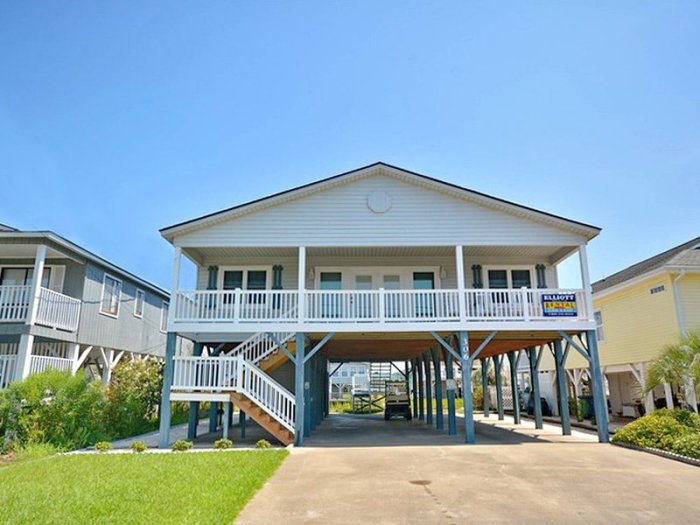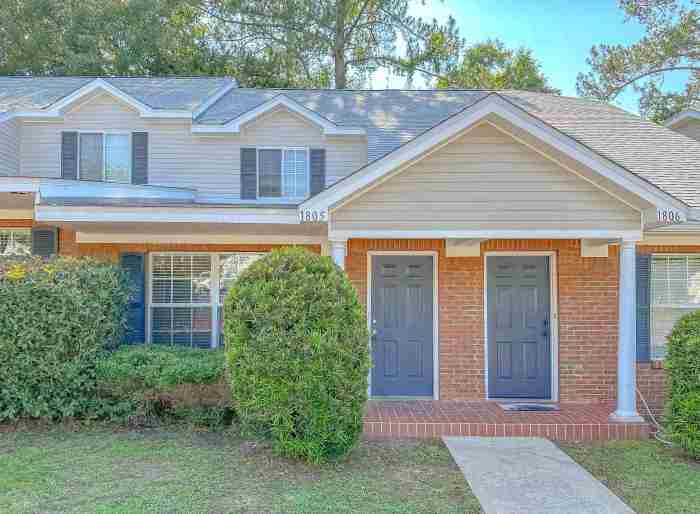Houses for Rent in “New” Locations: A Market Overview
Houses for rent in new – The rental market in locations beginning with “New” presents a diverse range of options, from bustling cityscapes to tranquil suburban settings. This overview compares rental costs, property types, and market trends across three distinct locations: New York City, New Orleans, and New Hampshire. Understanding these nuances is crucial for prospective renters navigating this competitive market.
Market Overview: Average Rental Prices and Influencing Factors
Rental prices are significantly influenced by location, property type, and market demand. The following table compares average rental costs and property sizes across three diverse “New” locations, highlighting key factors affecting rental prices.
| Location | Average Rent | Average Size (sq ft) | Notable Features |
|---|---|---|---|
| New York City, NY | $3,500+ | 800-1200 | Proximity to amenities, transit access, competitive market |
| New Orleans, LA | $1,800 | 1000-1500 | Unique architectural styles, vibrant culture, walkability in some areas |
| New Hampshire (Rural Areas) | $1,500 | 1500-2000+ | Larger properties, access to nature, quieter lifestyle |
Several factors influence rental prices in these locations. In New York City, high demand and limited supply drive up rental costs. New Orleans’ rental market is influenced by tourism and the city’s unique character, while New Hampshire’s rural areas offer more affordable options due to lower population density and slower market growth. Property taxes, local regulations, and the overall economic climate also play a significant role.
Typical Renter Profiles: Infographic Description
The typical renter profile varies significantly across these three locations. The following infographic provides a visual representation of these differences.
Infographic Description: The infographic would consist of three panels, one for each location. Each panel would include a stylized icon representing the location (e.g., a skyscraper for NYC, a jazz trumpet for New Orleans, a mountain for New Hampshire). Within each panel, there would be a bar graph showing age ranges (e.g., 25-34, 35-44, 45+), pie charts illustrating occupational distribution (e.g., professionals, students, service industry), and icons representing average household size (single, couple, family).
New York City: Predominantly young professionals (25-34), high percentage of single renters, diverse occupations.
New Orleans: More balanced age distribution, mix of professionals, artists, and service industry workers, slightly larger average household sizes.
New Hampshire: Older average age, higher percentage of families, occupations leaning towards remote work and local businesses.
Property Types and Features: A Comparative Analysis
The rental market in “New” areas offers a variety of property types to suit diverse needs and budgets. This section explores three common types: apartments, townhouses, and single-family homes.
Finding houses for rent in new areas can be exciting, but the search can be broad. If you’re considering locations near Philadelphia, you might want to check out the options available in similar suburbs; for example, you can explore the selection of houses for rent in Levittown PA. Returning to the initial search for houses for rent in new locations, remember to consider factors like commute times and local amenities when making your decision.
- Apartments:
- Typically smaller living spaces.
- Often include amenities like laundry facilities and swimming pools.
- Less maintenance responsibility for renters.
- Townhouses:
- Multi-level units with more space than apartments.
- May include private yards or patios.
- Renters often responsible for some exterior maintenance.
- Single-Family Homes:
- Largest living spaces, often with yards and garages.
- Renters typically responsible for all maintenance and repairs.
- Offer greater privacy and flexibility.
Apartments are ideal for single individuals or couples seeking convenience and low maintenance. Townhouses offer a balance between space and responsibility, while single-family homes are best suited for families or individuals who prefer privacy and a larger living space. However, larger properties typically come with higher rental costs and increased maintenance responsibilities.
Property Type Comparison Table

Source: orlandovacationhomes.com
| Property Type | Average Rent | Key Features | Target Renter Demographics |
|---|---|---|---|
| Apartment | Varies greatly by location and size | Smaller space, amenities, low maintenance | Singles, young couples, students |
| Townhouse | Higher than apartments, lower than single-family homes | Multiple levels, private space, some exterior maintenance | Small families, young professionals |
| Single-Family Home | Highest rental cost | Largest space, private yard, full maintenance responsibility | Families, individuals seeking privacy and space |
Rental Market Trends and Economic Impacts, Houses for rent in new
The rental market in “New” areas is dynamic, influenced by economic factors such as inflation and interest rates. Understanding these trends is essential for both landlords and renters.
- Increasing Rental Costs: Inflation and high demand continue to drive up rental costs in many “New” areas.
- Interest Rate Impact: Rising interest rates can affect the availability of mortgages for landlords, potentially impacting rental supply and prices.
- Shifting Demographics: Changes in population density and migration patterns influence rental demand in specific neighborhoods.
- Technological Advancements: Online rental platforms and property management tools are transforming how renters find and secure properties.
These trends suggest that rental costs are likely to remain elevated in the near future, particularly in high-demand areas. Renters should anticipate continued price increases and consider factors such as location and property type when making rental decisions.
Finding and Securing a Rental Property

Source: smartasset.com
Securing a rental property in a competitive market requires a strategic approach. The process typically involves several key steps.
- Online Searches: Utilize websites and apps specializing in rental listings.
- Real Estate Agents: Consider working with a real estate agent for assistance with property searches and negotiations.
- Viewing Properties: Schedule viewings to assess properties firsthand.
- Application Process: Complete rental applications, providing necessary documentation.
- Background Checks: Be prepared for background and credit checks.
- Lease Agreement Review: Carefully review the lease agreement before signing.
- Security Deposit: Pay the security deposit and first month’s rent.
Online listings offer convenience and a wide selection, while real estate agents provide expertise and support. Thorough preparation and attention to detail are crucial throughout the process.
Legal and Financial Considerations for Renters
Understanding legal and financial aspects of renting is crucial for protecting your rights and managing your finances effectively.
Lease Agreement Review: A lease agreement is a legally binding contract. Carefully review all terms and conditions before signing, paying particular attention to clauses related to rent payments, lease duration, maintenance responsibilities, and termination clauses.
Calculating Total Monthly Costs: Remember to factor in utilities (electricity, gas, water), internet, renter’s insurance, and any other potential fees when budgeting for your monthly rental expenses. A realistic budget ensures financial stability.
Common Legal Issues: Renters may encounter issues such as security deposit disputes, landlord-tenant disagreements regarding repairs, or lease violations. Familiarize yourself with your rights and responsibilities under local tenant laws and consider seeking legal advice if necessary.
Neighborhood Guides: New York City Comparisons
This section compares three diverse neighborhoods within New York City: Greenwich Village, Brooklyn Heights, and the Upper West Side. Each offers a unique atmosphere and cost of living.
| Neighborhood | Average Rent | Key Amenities | Overall Vibe Description |
|---|---|---|---|
| Greenwich Village | $4,000+ | Historic architecture, boutique shops, vibrant nightlife | Bohemian, artistic, lively |
| Brooklyn Heights | $3,500+ | Stunning waterfront views, brownstone architecture, family-friendly atmosphere | Elegant, upscale, community-oriented |
| Upper West Side | $3,000+ | Central Park proximity, cultural institutions, upscale residential buildings | Upscale, family-friendly, sophisticated |
Greenwich Village attracts young professionals and artists with its vibrant atmosphere. Brooklyn Heights is popular with families and those seeking a quieter, more established community. The Upper West Side caters to families and individuals who value proximity to cultural attractions and a refined urban lifestyle.
Quick FAQs: Houses For Rent In New
What are the typical application fees for rental properties?
Application fees vary widely depending on location and property management company, but often range from $25 to $100 per applicant.
What is a security deposit, and how much should I expect to pay?
A security deposit protects the landlord against damage to the property. It’s typically equal to one or two months’ rent.
What utilities are typically the tenant’s responsibility?
Common tenant-paid utilities include electricity, gas, water, and internet. Always clarify this in the lease agreement.
How long is a standard lease term?
Standard lease terms are usually 6 months or 1 year, but shorter or longer terms are sometimes available.
What should I do if I encounter problems with my landlord?
First, try to resolve the issue directly with your landlord. If that fails, consult your lease and consider contacting your local tenant’s rights organization or legal counsel.



